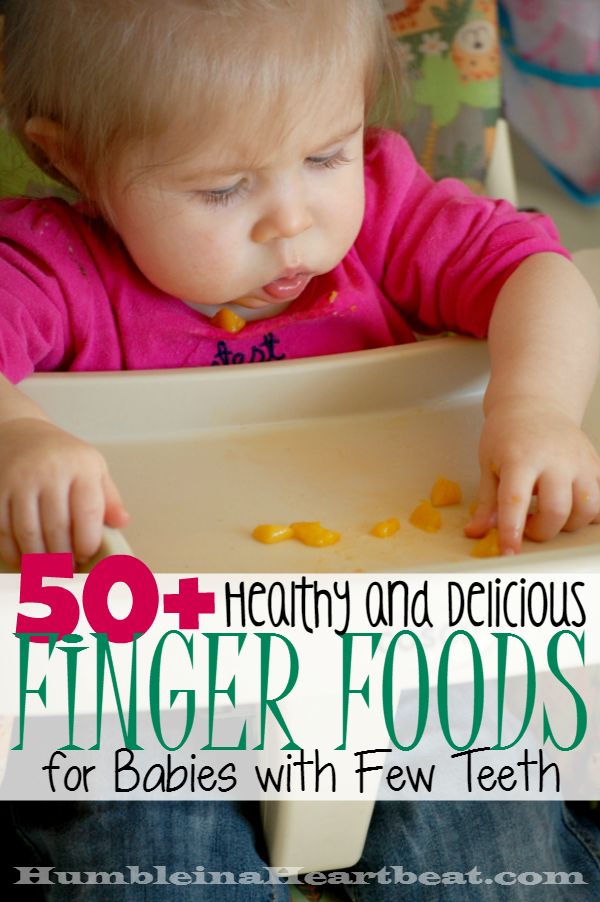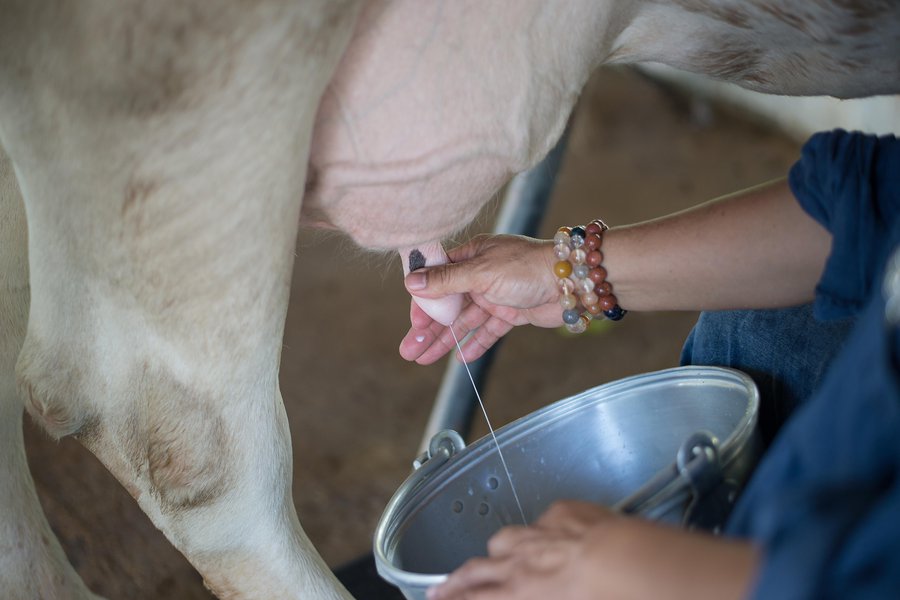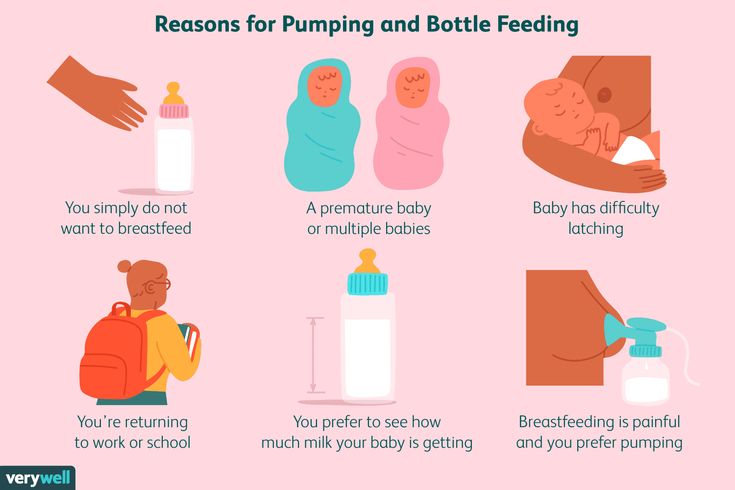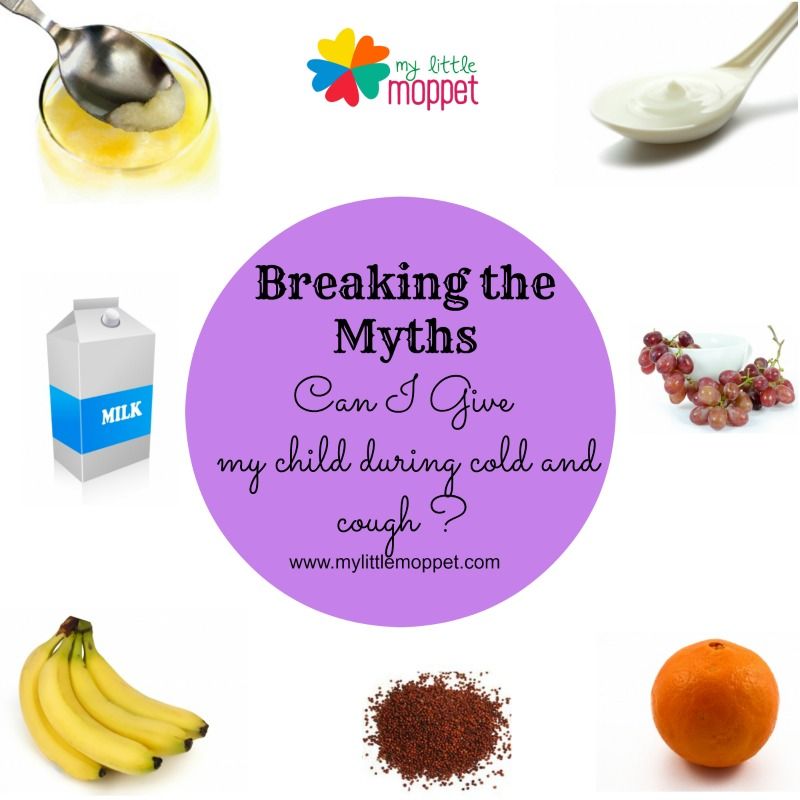Ideal first finger foods for babies
Best Finger Foods for Babies: The Ultimate Guide
How exciting that your baby is about to graduate from mushy foods to finger foods! This is a big step in your little one’s development. However, you may be wondering when’s the right time to start finger foods, and how to tell that your baby is ready. We’ll answer all these questions and more, plus give you a list of the best finger foods to introduce to your baby first.
Introducing Finger Foods to Your Baby
So, when can babies eat finger foods? You can start to give your baby finger foods around the time they’re able to sit up independently and can bring their hands to their mouth. This may happen between the ages of 8 months old and 9 months old, but your baby may be ready a little sooner or later than this time.
Around this time, you may also notice that your baby is developing their pincer grasp and may be making chewing motions. These are both great indications that your baby’s ready for finger foods. Moreover, using their fingers to pick up foods will further develop your baby’s fine motor skills.
Some parents who adopt the baby-led weaning approach may start offering finger foods to their infants as early as 6 months old. This method skips spoon-feeding with solid foods and instead lets your baby take the lead in self-feeding with finger foods. Some believe this approach can decrease fussiness when it comes to introducing new foods, including finger foods, to your baby. Speak to your child’s healthcare provider if this method is something you’d like to try.
Giving your baby finger foods can help your little one learn to feed themself, just one step toward gaining independence. Self-feeding can be great fun for your baby. Even if much of the food doesn’t end up in your baby’s mouth, the fact that they’re exploring this new frontier is an accomplishment to be proud of.
First Finger Foods for Your Baby
As you begin choosing finger foods for your baby, check out the following ideas:
Steamed veggies like sweet potatoes, potatoes, carrots, green beans, peas
Soft, ripe fruits like bananas, berries, peaches (peeled), mangoes (peeled)
Whole-grain breakfast cereals (without nuts, clusters, or chunks)
Whole-grain pasta (cooked well)
Whole-wheat bread
Whole-grain crackers or wafers like teething biscuits
Soft meats like chicken
Cheese (mild)
Scrambled eggs.

Be sure that any of the above finger foods are cut into small pieces. You don’t want your baby eating a piece that’s too big to swallow. And, make sure to watch them while eating.
Finger Food Safety
During this time babies are more likely to swallow foods without chewing them, whether they have a few baby teeth coming in or they have no teeth. Avoid giving any finger foods that require a grinding action to chew (this type of chewing is typically mastered around the age of 4), as these may pose a choking risk. Offer finger foods that are soft, easy to swallow, and broken or cut into pieces that your baby cannot choke on. A good rule of thumb is that soft and mushy finger foods are safe for your baby. Small, round, coin-shaped, hard, chewy, crunchy, slippery, or sticky foods may lead to choking. Here are some foods to avoid offering your baby when they start on finger foods:
Peanut butter (in chunks)
Meat (in chunks)
Cheese (in chunks)
Raw veggies (in large chunks or round shapes), including celery sticks, carrot sticks, baby carrots, cherry tomatoes, and peas
Raw hard fruit (in large chunks or round shapes), including apples, pears, and grapes
Nuts (whole)
Seeds
Popcorn
Chewing gum
Candies (hard, gooey, or sticky)
Hot dogs or meat sticks.
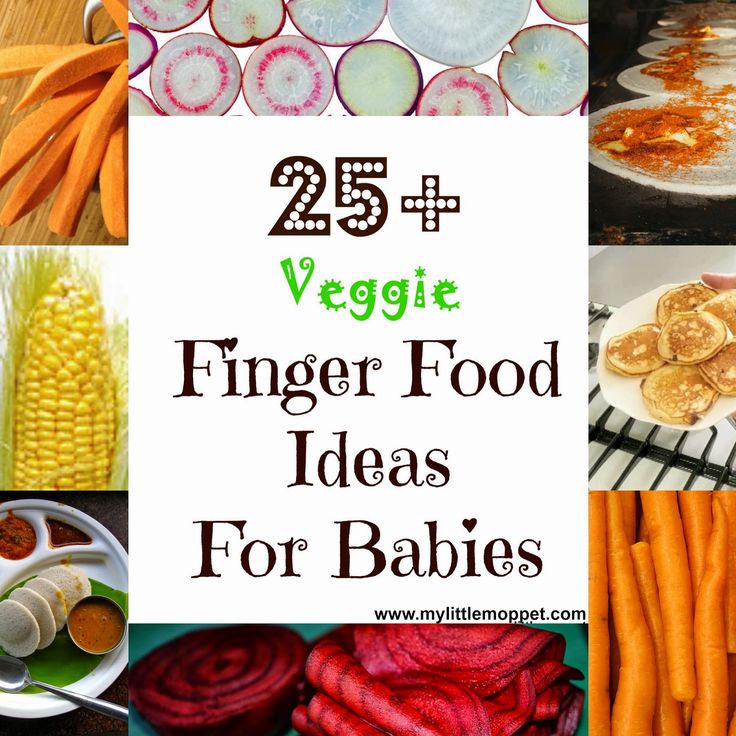
There are ways you can still give some of the above foods while making them easier to eat and less hazardous to swallow. For example:
Grapes or cherry tomatoes, cut in half
Creamy peanut butter spread thinly on whole-grain bread that’s cut into small squares
Hot dog, cut lengthwise and then cut into small 1/2-inch pieces.
Note on Food Allergies
Medical experts once recommended that parents avoid feeding their babies eggs, fish, and peanut butter since babies may be allergic to these foods. However, it’s now recommended that you introduce these foods early—while keeping a close watch for any reactions—since this approach can help reduce your child’s chances of developing food allergies. Before introducing peanut butter or peanut products, consult with your baby’s healthcare provider. Your baby is more likely to be allergic to these foods if
food allergies run in your family
your baby is known to have an egg allergy
your baby has eczema.

The Bottom Line
It’s time to introduce finger foods to your baby when you see that they’re able to sit up on their own, start bringing their hands to their mouth, and can use a pincer grasp to hold onto small items, like finger foods. This development happens around the age of 8 or 9 months old, but you may see it sooner or later in your baby.
In the beginning, you’ll want to introduce finger foods that are soft and easy to swallow, since babies at this age tend to swallow instead of chew even if they have a few baby teeth. Think steamed veggies and soft fresh fruits. You can also introduce whole-grain bread, crackers, cereal, or pasta if they’re cut into small pieces. Chicken, mild cheese, and scrambled eggs are also great options when served in small pieces.
Avoid hard foods like raw veggies and fruits, as well as chunks of nut butter, cheese, and meat. Whole nuts and seeds are not recommended, nor are chewing gum, candies, hot dogs, or meat sticks. All these items can pose a choking hazard.
All these items can pose a choking hazard.
Transitioning to finger foods is a big step in your baby’s development and independence. Letting your baby self-feed with finger foods may be a bit messy at first, but you’ll both get the hang of it. Learn more about developmental milestones for your 9-month-old baby.
Best Early Finger Foods for Baby (With Tips, Visuals, and Recipes)
Use this list of safe, nutritious, and easy to eat finger foods for baby to help you know exactly what (and how) to offer at meals and snacks. Plus, find the best first finger foods, troubleshooting tips, and visuals of foods broken down by food group to keep things easy!
Finger Foods for Baby
After baby starts solids and is ready to move onto finger foods, you may feel a little confused by exactly what to serve and how to serve it. Which is totally normal because it can be scary to let baby feed themselves this way and we may not have any experience doing this—or we may have totally forgotten from our last kiddo!
This list of finger foods for baby will cover some great first finger foods to start with, then set you up with plenty of healthy options from each food group.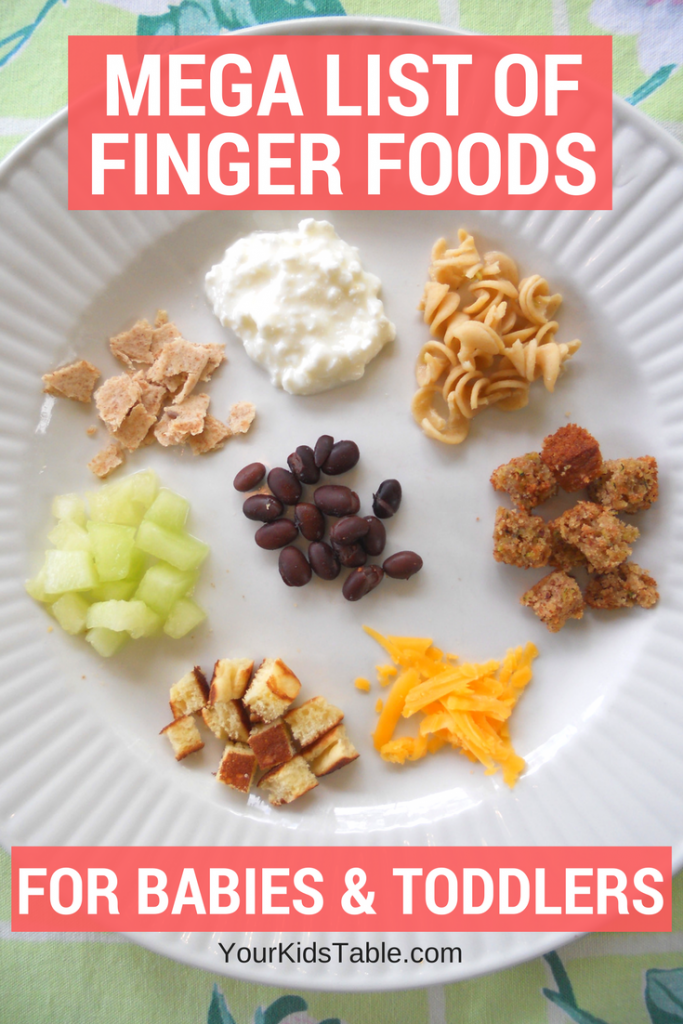
TIP: Find more info on starting solids here and the best foods to start with if doing baby led weaning or purees with baby.
Healthy Baby Food
I love sharing these ideas for baby food since they are easy to prepare and serve and because I know how hard it can be to continue to come up with flavorful and healthy meals and snacks for our little ones. Let me tell you, I’m on my third kiddo and it can be such a challenge to feed him during the chaos of parenting the rest of my crew! These foods are wholesome and nutritious—perfect for your baby.
TIP: I’m a big fan of SpoonfulONE, a company that offers the most complete way to introduce food allergens to our kids. They make mix-ins, puffs, and crackers that are yummy and easy for babies and toddlers to eat. Learn more about their pediatrician-approved baby foods here. (sponsored link)
Best First Finger Foods
When baby is around 9 months, you’ll notice that they’re able to pick up smaller pieces of food with two fingers. This is known as the “pincer grasp” and is a sign that they’re ready to start finger foods. To be clear, when I say “finger foods” I mean small pieces of food that a baby (or toddler) can feed themselves.
This is known as the “pincer grasp” and is a sign that they’re ready to start finger foods. To be clear, when I say “finger foods” I mean small pieces of food that a baby (or toddler) can feed themselves.
Here are some of my favorite ones to start with that are all super soft, safe to eat, and easy to pick up.
- Scrambled egg, broken up into small pieces
- Roasted sweet potato mashed and broken up into small pieces
- Fresh raspberries, broken up into smaller pieces
- Oatmeal, cooked according to package directions and allowed to cool
- Tofu, diced and sauteed lightly or steamed
- Ground beef, chicken, or turkey, broken up into small pieces or lightly mashed meatballs
- Shredded cheese or crumbled goat cheese
- Mashed sweet potato, in little pieces
- Peanut butter puffs
TIP: You can serve the tofu, ground meat, or meatballs in veggie puree from a pouch or a simple marinara sauce for extra moisture and flavor.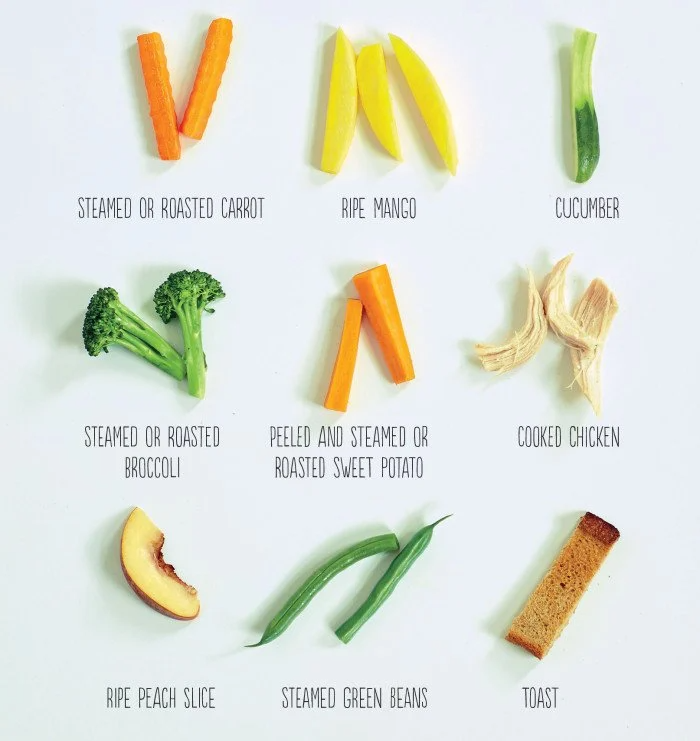 Learn more about how and why to introduce peanut butter.
Learn more about how and why to introduce peanut butter.
Finger Foods for Baby: Fruits and Veggies
Some of my favorite early fruits and veggies to serve babies are:
- Mashed roasted sweet potato, broken up into small pieces
- Warmed frozen peas, slightly mashed if desired
- Roasted Zucchini
- Diced Roasted Sweet Potato or Butternut Squash
- Fresh blueberries, cut in half or quarters
- Fresh raspberries, broken into small pieces
- Banana, broken into small segments (they are less slippery this way versus slicing them)
- Avocado, diced and mashed slightly (be sure it’s ripe and very soft)
TIP: A good rule of thumb is to serve pieces of food that are about the size of a pea to start and soft enough that they are easy to squish between your fingers. This will be easy for baby to pick up and eat and will also reduce chances of choking.
Finger Food Ideas: Carbohydrates
Offering complex carbohydrates can provide fiber, a variety of textures, B vitamins, and more. Try these with your baby.
Try these with your baby.
- Spinach pancakes (moisten with applesauce or plain yogurt if needed; this recipe is particularly moist and great for babies)
- Oatmeal, cooked according to package directions and allowed to cool
- Baby Puffs
- Peanut Butter Puffs
- Rice (it’s easiest if it’s in little clumps so baby can pick it up; this Coconut Rice or this Cheesy Rice are both good options)
- Baby Banana Muffin
- O cereal (soften in nondairy unsweetened milk or yogurt as needed)
- Baked Oatmeal, diced
Finger Food Ideas: Proteins
Offering proteins will continue to expose baby to a range of nutrients. These are my go-tos for babies newer to finger foods—and toddlers too.
- Shredded cheese (thicker cuts are a little easier to pick up)
- Tofu, diced and sauteed lightly or steamed
- Flaked cooked wild salmon
- Lightly mashed meatballs
- Shredded chicken, cut up finely (we love this Butter Chicken to share with baby)
- Ground beef, turkey, or chicken, broken into smaller pieces
- Lightly mashed beans
- Scrambled eggs, broken up into small pieces
- Diced egg muffins
I’d love to hear any questions you may have, or if you have foods that your babies enjoy that I didn’t include here.
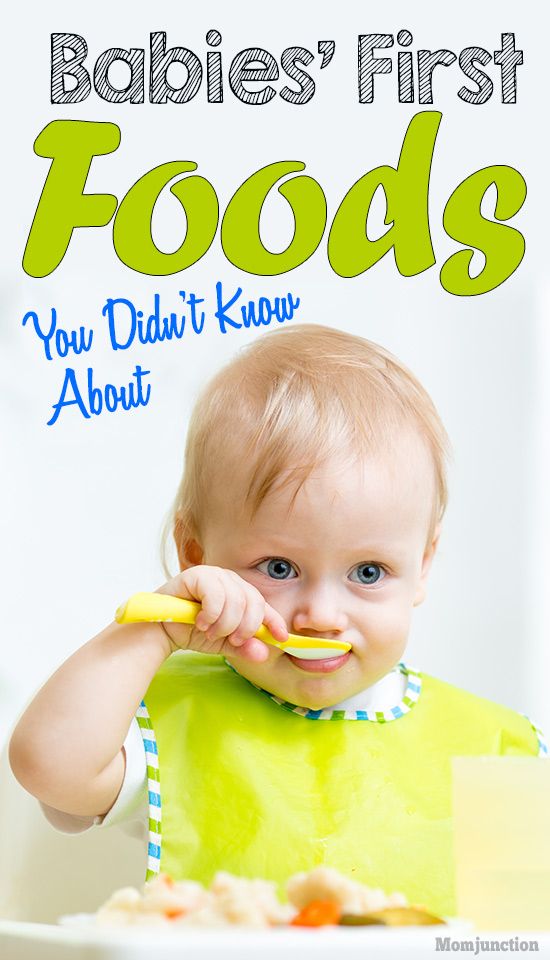 Chime in below in the comments!
Chime in below in the comments!Prep Time 5 minutes
Cook Time 5 minutes
Total Time 10 minutes
Author Amy Palanjian
Cuisine American
Course Baby Food
Calories 124kcal
Servings 1
First Finger Foods (choose 1-3 per meal)
- ▢ 1 Scrambled egg (broken up into small pieces)
- ▢ 1/4 cup Roasted sweet potato, mashed and broken up into small pieces
- ▢ 1/4 cup Fresh raspberries (broken up into smaller pieces)
- ▢ 1/4 cup Oatmeal (cooked according to package directions and allowed to cool)
- ▢ 2 tbsp Tofu (diced and sauteed lightly or steamed)
- ▢ 2 tbsp ground beef, chicken, or turkey, broken up into small pieces or lightly mashed meatballs
- ▢ 2 tbsp shredded cheese or crumbled goat cheese
- ▢ 1/4 cup Mashed sweet potato (broken into little pieces)
- ▢ 1/4 cup Peanut butter puffs
Fruits and Veggies
- ▢ 1/4 cup mashed roasted sweet potato (broken up into small pieces)
- ▢ 1/4 cup warmed frozen peas
- ▢ 1/4 cup Roasted Zucchini
- ▢ 1/4 cup diced Roasted Sweet Potato or Butternut Squash
- ▢ 1/4 cup blueberries (cut in half or quarters)
- ▢ 1/4 cup raspberries (broken into small pieces)
- ▢ 1/4 cup banana slices (broken into small segments—they are less slippery this way versus slicing them)
- ▢ 2 tbsp avocado (diced and mashed slightly—be sure it's ripe and very soft)
Whole Grains and Carbohydrates
- ▢ 1 Spinach pancakes (moisten with applesauce or plain yogurt if needed; this recipe is particularly moist and great for babies)
- ▢ 1/4 cup Oatmeal (cooked according to package directions and allowed to cool)
- ▢ 1/4 cup Baby Puffs
- ▢ 1/4 cup Peanut Butter Puffs
- ▢ 1/4 cup fully cooked rice (it's easiest if it's in little clumps so baby can pick it up; this Coconut Rice or this Cheesy Rice are both good options)
- ▢ 1 Baby Banana Muffin
- ▢ 1/4 cup O cereal (soften in nondairy unsweetened milk or yogurt as needed)
- ▢ 1/4 cup Baked Oatmeal (diced or regular oatmeal broken into little pieces)
Dairy
- ▢ 2 tbsp Shredded cheese (such as mozzarella)
- ▢ 2 tbsp Tofu (diced and sauteed lightly or steamed)
- ▢ 2 tbsp flaked cooked wild salmon
- ▢ 1 lightly mashed meatballs
- ▢ 2 tbsp finely shredded chicken (we love this Butter Chicken to share with baby)
- ▢ 2 tbsp ground beef, turkey, or chicken (broken into smaller pieces)
- ▢ 2 tbsp lightly mashed beans
- ▢ 1 Scrambled egg (broken up into small pieces)
- ▢ 1 Diced Egg muffins
For each meal or snack, choose 2-3 foods from a mix of food groups.
 Aim to include some fat in most meals and protein in many too.
Aim to include some fat in most meals and protein in many too.Prepare the food, cutting into small pieces and/or mashing as needed to make the food easy to eat.
Start with small portions and allow more as baby indicates according to their hunger.
- Store leftovers in an airtight container for 3-5 days in the fridge.
- Many foods you cook for your family will work as baby finger foods—just be sure they are easy to squish between your fingers and the pieces are small and easy to chew.
- Babies very normally make a lot of faces when they eat, so don't assume they don't like something just because they scrunch their nose!
- Flavors and textures can take time to learn to eat, so continue offering foods in small portions even if baby hasn't liked them in the past—and make sure they taste good to you!
Calories: 124kcal, Carbohydrates: 14g, Protein: 7g, Fat: 4g, Saturated Fat: 1g, Polyunsaturated Fat: 1g, Monounsaturated Fat: 2g, Trans Fat: 1g, Cholesterol: 164mg, Sodium: 81mg, Potassium: 344mg, Fiber: 4g, Sugar: 5g, Vitamin A: 9857IU, Vitamin C: 18mg, Calcium: 51mg, Iron: 1mg
Tried this recipe?Rate in the comments and tag @yummytoddlerfood on IG!
Scheme of the first feeding of a child (table) with artificial and breastfeeding, what can be given to a baby
The need for the introduction of complementary foods in modern mothers has long been beyond doubt. Pediatricians, pediatric nutritionists and other graduates unanimously say that at some point both mother's milk and formula are not enough to satisfy the growing needs of the child's body for useful trace elements and vitamins. That's when it's time to introduce complementary foods. The fact that your baby is ready to get new experiences and try tastes so far unknown to him is indicated by the presence of the following signs:
Pediatricians, pediatric nutritionists and other graduates unanimously say that at some point both mother's milk and formula are not enough to satisfy the growing needs of the child's body for useful trace elements and vitamins. That's when it's time to introduce complementary foods. The fact that your baby is ready to get new experiences and try tastes so far unknown to him is indicated by the presence of the following signs:
• doubling the initial weight of the child,
• ability to sit with support,
• child does not push food out of his mouth,
• curiosity and desire to try something from the common table.
Signs of malnutrition in a child, constant feeling of hunger and anxiety associated with it, weight loss can also be important signals for the start of complementary foods. In these cases, it is recommended to immediately contact a specialist and share your observations with him.
Contents: Hide
- When to start the introduction of complementary foods
- with which products to start the completenance of complementary foods
- We avoid errors
- Table of complementary foods for months with artificial feeding
- Table of complementary foods when breastfeeding
- start introducing complementary foods
The timing of the introduction of complementary foods is still debated.
 But if we bring scientific reasoning to a common denominator, then the conclusion suggests itself that complementary foods can be introduced from about six months, and for children with certain medical indications - from 3-5 months. Many experts believe that half a year is the ideal time for complementary foods, when the first colic is over, and the digestive system has matured enough to try new foods. The exact answer to the question of when to introduce complementary foods in a particular child can only be given by a pediatrician. In some situations, it may be necessary to introduce new dishes into the baby's diet as early as 4 months, and someone will be ready for this only after six months. nine0007
But if we bring scientific reasoning to a common denominator, then the conclusion suggests itself that complementary foods can be introduced from about six months, and for children with certain medical indications - from 3-5 months. Many experts believe that half a year is the ideal time for complementary foods, when the first colic is over, and the digestive system has matured enough to try new foods. The exact answer to the question of when to introduce complementary foods in a particular child can only be given by a pediatrician. In some situations, it may be necessary to introduce new dishes into the baby's diet as early as 4 months, and someone will be ready for this only after six months. nine0007 What foods should I start introducing complementary foods with
Fruits, vegetables or cereals? Which of these foods are best for starting complementary foods? Experts have long answered this question as follows: if the baby is underweight, suffers from frequent loose stools, it is advisable to start with cereals (of course, gluten-free and dairy-free), and if everything is fine with weight, then vegetables will be the first in line.
 Also, vegetable complementary foods are recommended for breastfed children with constipation problems, rickets, or those born prematurely, whose weight is normal or exceeds the standards. nine0003 Why not fruit? Everything is simple. Fruits have a bright and sweet taste, and after trying an apple or banana first, the baby is likely to refuse zucchini or broccoli, which do not have the same rich taste. Therefore, the introduction of fruit purees and juices into the diet is postponed until vegetable purees become a familiar dish on the menu. As for cereals, buckwheat, rice and corn are first introduced, as they are characterized by the absence of gluten, saturate and are well digested.
Also, vegetable complementary foods are recommended for breastfed children with constipation problems, rickets, or those born prematurely, whose weight is normal or exceeds the standards. nine0003 Why not fruit? Everything is simple. Fruits have a bright and sweet taste, and after trying an apple or banana first, the baby is likely to refuse zucchini or broccoli, which do not have the same rich taste. Therefore, the introduction of fruit purees and juices into the diet is postponed until vegetable purees become a familiar dish on the menu. As for cereals, buckwheat, rice and corn are first introduced, as they are characterized by the absence of gluten, saturate and are well digested. Read also: How to properly teach a child to different tastes
Avoiding mistakes
In order for the introduction of complementary foods not to become a test for either the baby or the mother, you need to follow some recommendations. Most importantly, be patient and don't get too upset if things don't go according to plan.
 Each child is individual, as are their taste preferences and needs.
Each child is individual, as are their taste preferences and needs.
• Start complementary foods if the baby is perfectly healthy. Contraindications for the introduction of new products will be teething, colds, stress associated with separation or moving, recent or planned vaccinations. nine0003 • New foods are introduced gradually, starting with half a teaspoon. In the absence of allergies or digestive problems, the amount of the product is approximately doubled the next day. Sometimes the introduction of a new product stretches up to a week. Do not rush, give the child the opportunity to "taste" this dish. If the baby flatly refuses the offer, postpone the acquaintance for at least a week.
• Do not force your child to eat. After all, your goal is to introduce your child to new tastes and help develop good eating habits. nine0003 • The best time for the first feeding is after the morning feed until 12 noon, when the baby is already hungry and ready to eat something else. In case something goes wrong, you will know about it during the day, not at night.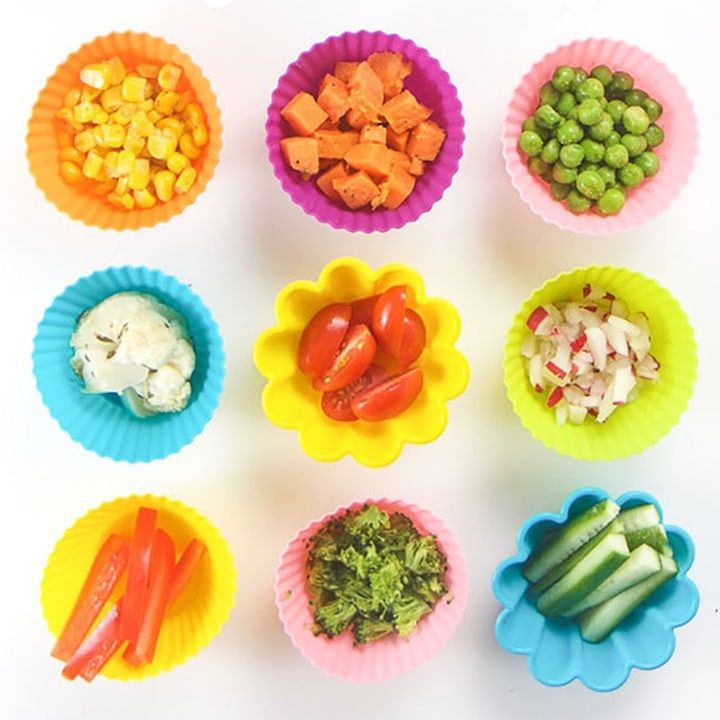
• In the event of an adverse reaction to the product, such as an allergy, seek medical advice immediately. Then, in agreement with the doctor, offer this dish after a certain period of time.
• Gradually increase the amount recommended by your pediatrician. If you don't fit within a week, don't worry. Listen to your child and act accordingly. nine0003 • Always start feeding with complementary foods. Only then offer breast milk or formula.
• Stick to a 5-meal schedule. Feed your baby at the same time every day.
• Food offered to the baby must be thermally processed - boiled or steamed. The dish should be at a comfortable temperature - about 37 ° C.
• Purees and cereals should be of a liquid consistency so that a child who does not yet know how to chew can comfortably eat them. Thicker dishes with lumps and pieces are introduced into the diet by about a year, when there are already several teeth. nine0003 • Do not use salt, sugar or spices when preparing complementary foods. Also, do not add them in order to force the child to eat something. Let the baby get used to natural tastes.
Also, do not add them in order to force the child to eat something. Let the baby get used to natural tastes.
• Complementary foods are prepared at one time and should never be refrigerated until the next meal. Everything should be only the first freshness.
• If you prefer ready-made baby food, carefully study the top manufacturers, pay special attention to the shelf life when buying. nine0007When introducing complementary foods, be guided by the data in the tables, which indicate which products, in what quantity and in what months experts recommend giving. 6 months
7 months
8 months
9 months
10 months
11 months
12 months
vegetables
150 g
170 g
180 g
180 g
180 g
200 g
200 g
Porridge
50–100 g
150 g
068
180 g
180 g
180 g
200 g
200 g
fruit
60 g
70 g
80 g
100 g
100 g
100 g
meat
50 g
60 g
60 g 9000
70 g
70 g
70 g
Cottage cheese
9000
068
10-30 g
30 g
40 g
50 g
50 g
Zhelki
1/4
1/4
1/2
1/2
1/2
Fish
9000
30 g
50 g
60 g
Vegetable
1 ml
3-5 ml
5 ml
5 ml
5 ml
9 Sl.

1 ml
3-5 ml
5 ml
5 ml
9006 8 months
9 months
10 months
11 months
12 months nine0012
Silent porridge
10–150 g
150–180 g
150–180 g
180–200 g 9000 g 9000 g 9000 g 9000 g 9000 g 9000 g 9000 g 9000 g 9000 g 9000 g
068
200 g
200 g
200 g
Vegetables
10–120 g
80–120 g
9000 9000 9000 9000 9000 9000 9000 9000 9000073
150 g
170 g
180 g
200 g
200 g
Military0007
-
-
-
-
-
-
160–200 ml
Fruits
5–60 g
50-60 g
60 g 9000 9000 g 900-100 g 900-100 g 9000 g.
 0007
0007 100–120 g
100–120 g
100–120 g
meat
-
10-30 g
30–70 g
60–70 g
60–70 g
9000 9000
9007 9007 9007 9007 900EA0119 Cottage cheese -
-
5–10 g
40 g
40 g
50 g
yolk
-
-
½
½
½
½ --1
fish
-
-
-
10–40 g
10–40 g
50–60 g
9 vegetable oil
-
-
1 ml
3-5 ml
5 ml
5 ml
5 ml
Cream oil
-
-
1-3 g
3-4 g
5 g
5 g
5 g
, as you can see, the schemes for the introduction of pectoral and artificial feeding are not too much.
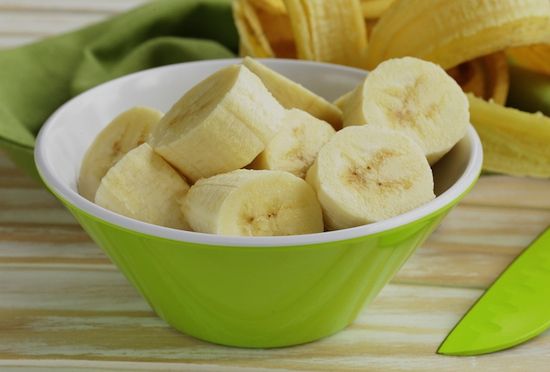 In any case, starting to introduce new foods into the baby's diet, you will have to give the baby milk or formula for a long time, which are still the basis of his nutrition. nine0007
In any case, starting to introduce new foods into the baby's diet, you will have to give the baby milk or formula for a long time, which are still the basis of his nutrition. nine0007 How to introduce solid foods by month
3 months
If your doctor advises your breastfeeding or formula-fed baby to introduce complementary foods at 3 months, start with what your specialist has recommended. If these are vegetables, start with the classic - zucchini puree. This vegetable contains many beneficial nutrients and fiber. Start with half a teaspoon, carefully observing the reaction of the child's body. Be sure to supplement your baby with breast milk or formula afterwards. In case the child does not like the zucchini, try giving broccoli or cauliflower. Well, if the doctor advised porridge, feel free to choose buckwheat or corn. nine0003 4-5 months
After your baby has tasted zucchini, broccoli and cauliflower, it's time to add other vegetables: carrots, potatoes, green peas. Do not overdo it with carrots, give it no more than 2 times a week. It is even better if this root crop is combined with other vegetables. It's porridge time! Gluten-free, water-cooked buckwheat, rice or corn. If the baby refuses to eat such cereals, add some breast milk or the usual mixture to them.
Do not overdo it with carrots, give it no more than 2 times a week. It is even better if this root crop is combined with other vegetables. It's porridge time! Gluten-free, water-cooked buckwheat, rice or corn. If the baby refuses to eat such cereals, add some breast milk or the usual mixture to them.
6 months
Time to pamper your baby with dried fruit compote, and formula-fed children start giving milk porridge. You can use a milk mixture to prepare such cereals, and in some cases, milk diluted with water. But in general, pediatricians do not advise introducing cow's milk into a child's diet before 8 months, as this can cause allergic reactions.
7 months
After the baby gets used to vegetable purees, you can try to give fruit purees and, if desired, juices, which should be diluted with water. There has been a lot of negative talk about juice lately. There is no fiber in them, but there are a lot of acids, which may not be completely safe for the stomach and have a high sugar content. So consult a pediatrician and think carefully about whether to give the baby juices or still prefer mashed potatoes and compotes. An excellent alternative to juices is children's herbal teas. Start introducing your baby to fruits with apples (preferably green varieties), bananas, and pears. The baby's menu is replenished with a new product - meat. Rabbit meat, turkey meat are best suited. Chicken and veal are also considered a good option. Low-fat pulp without streaks is taken. It is boiled or brought to readiness for a couple, then crushed in a blender or meat grinder. Meat with a gradual increase in its quantity is given as part of vegetable purees. Also at 7 months, it's time to give the baby a pumpkin. nine0003 8 months
So consult a pediatrician and think carefully about whether to give the baby juices or still prefer mashed potatoes and compotes. An excellent alternative to juices is children's herbal teas. Start introducing your baby to fruits with apples (preferably green varieties), bananas, and pears. The baby's menu is replenished with a new product - meat. Rabbit meat, turkey meat are best suited. Chicken and veal are also considered a good option. Low-fat pulp without streaks is taken. It is boiled or brought to readiness for a couple, then crushed in a blender or meat grinder. Meat with a gradual increase in its quantity is given as part of vegetable purees. Also at 7 months, it's time to give the baby a pumpkin. nine0003 8 months
An important moment in the introduction of complementary foods during artificial and breastfeeding occurs exactly at 8 months. It's time to give the baby a yolk. Watch the reaction of the body very carefully: if there are any manifestations of allergies. In case of a negative reaction of the body to chicken yolk, exclude it from the menu and try quail. It is best to give this product in the morning feeding from 9 to 11 hours. Along with vegetable and butter, gluten cereals are also introduced: oatmeal, millet, barley, pearl barley. It's time to give your child a taste of light vegetable soups. The components of the dish should be familiar to the child. Do not experiment by introducing dishes into the diet even with one unknown ingredient. Meatballs, boiled or steamed, are added to the meat in the form of mashed potatoes. nine0003 9 months
In case of a negative reaction of the body to chicken yolk, exclude it from the menu and try quail. It is best to give this product in the morning feeding from 9 to 11 hours. Along with vegetable and butter, gluten cereals are also introduced: oatmeal, millet, barley, pearl barley. It's time to give your child a taste of light vegetable soups. The components of the dish should be familiar to the child. Do not experiment by introducing dishes into the diet even with one unknown ingredient. Meatballs, boiled or steamed, are added to the meat in the form of mashed potatoes. nine0003 9 months
At this age, the baby should be introduced to the diet of low-fat fish: pollock, hake, perch, cod. For these purposes, fillets are taken and steamed, stewed or boiled. For the first time, fish are given in very small quantities. Start with once a week, gradually increasing to two. Remember that either fish or meat is given on the same day, without mixing these 2 products. If at the age of 8 months there were no prunes on the menu of the child, it's time to fix it. Dried fruit compote is also an excellent option, which at first is best diluted with water. However, you definitely shouldn’t get carried away with dried apricots, it’s better to wait until the baby reaches the age of one. nine0003 Months 10–12
Dried fruit compote is also an excellent option, which at first is best diluted with water. However, you definitely shouldn’t get carried away with dried apricots, it’s better to wait until the baby reaches the age of one. nine0003 Months 10–12
The diet characteristic of this period is characterized by an increase in portions to their maximum values indicated in the scheme. Also, it is at this age that the last feeding is gradually replaced by milk or kefir.Now that you've come across a set of essential tips, you're ready to start weaning. Once again, consult with a specialist, be patient, not forgetting to listen to the baby's body. We are confident that you will succeed. The main thing here, as in any other business, is a positive attitude. It all depends on you and your desire to raise a healthy and happy baby with competent eating behavior. Don't stop if you fail and don't get frustrated if things don't go according to plan. Everything will definitely work out.
 nine0007
nine0007 #Nutrition for children up to a year #Complementary foods
at what age to introduce with breastfeeding and artificial feeding, how to cook at home
When to introduce the first complementary foods
Today there are no hard and strict rules and deadlines for the introduction of complementary foods. Parents should first of all focus on the signs of the child's readiness for complementary foods. Here's what pediatrician, candidate of medical sciences Anna Levadnaya advises to pay attention to , the author of a blog about pediatrics and not only on Instagram. nine0007
The child holds his head confidently.
- Can sit with support, meaning it can be placed in a high chair or placed on an adult's lap.
- The kid shows an active food interest: he is interested in food, watches what adults eat.
- Breastfeeding or formula feeding is well organized and does not cause any problems.
- The child can put his hand to his mouth, puts various objects in his mouth, such as toys.
 In this case, the baby chews or champs. nine0016
In this case, the baby chews or champs. nine0016
As a rule, all these signs appear in the period from 5.5 to 7.5 - 8 months, but most often around 6 months. All babies develop differently, and one baby may be ready to try his first puree or porridge as early as 5 months, and another at 6 or 7 months will refuse the new food you offer.
What complementary foods a child needs in the first months
And here again, there are no strict recommendations and rules. On the contrary, many experts agree that it doesn’t matter which dish you start complementary foods with, the most important thing is to provide the right nutritional interest. In this case, the child will eat all the foods that you offer him. nine0007
In Russia, it is customary to focus on the following scheme for the introduction of complementary foods. The first to introduce cereals or vegetables, depending on the weight of the child. As a rule, vegetables are first, then cereals, then meat, then fruits, then cottage cheese.
 In some US states, for example, on the contrary, it is recommended to start complementary foods with meat. But the general message of the recommendations is to maximize the variety of tastes and textures in the first year of life. From vegetables in the first months, you can offer zucchini, cauliflower, broccoli, pumpkin, carrots, potatoes. Of the cereals, gluten-free are the first to be introduced: rice, buckwheat, corn. From fruits - apple, pear, banana, peach and others. From meat - it is better to start with a rabbit, turkey, chicken, veal. nine0007
In some US states, for example, on the contrary, it is recommended to start complementary foods with meat. But the general message of the recommendations is to maximize the variety of tastes and textures in the first year of life. From vegetables in the first months, you can offer zucchini, cauliflower, broccoli, pumpkin, carrots, potatoes. Of the cereals, gluten-free are the first to be introduced: rice, buckwheat, corn. From fruits - apple, pear, banana, peach and others. From meat - it is better to start with a rabbit, turkey, chicken, veal. nine0007 — At the very beginning, complementary foods should be puree-like, says Anna Levadnaya. - It is better to give preference to monocomponent purees so that the baby learns to distinguish between different tastes.
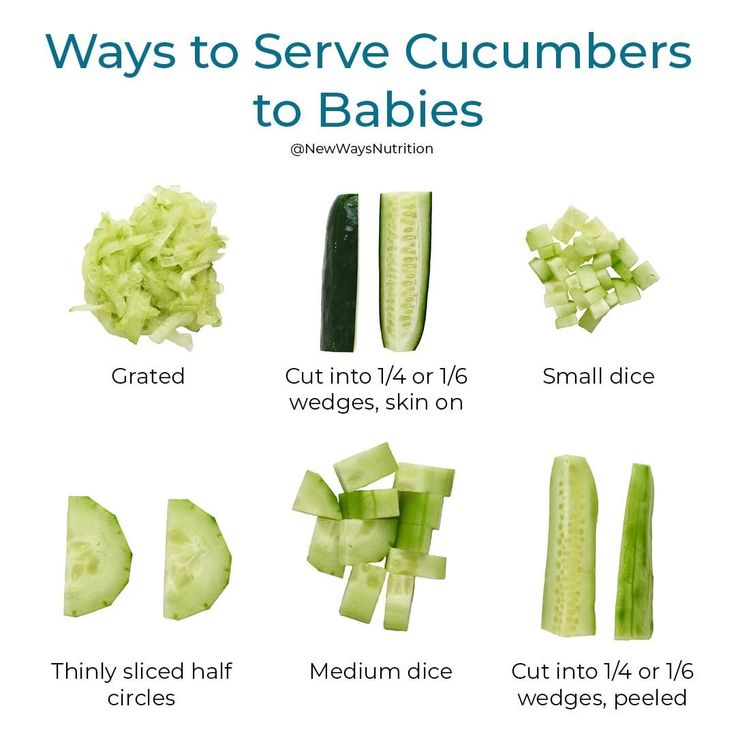 As you introduce vegetables and cereals, add butter and vegetable oils to them. If there are no problems with the introduction of complementary foods, it is recommended to use the maximum variety of food textures as early as possible. Starting from 7-8 months, the baby can and should be introduced to semi-solid foods. This is very important for the correct formation of food interest, and for the development of chewing skills, the correct functioning of the tongue, the development of speech, the “tweezer” grip, and the coordination of the work of hands, mouth and eyes. If you do not introduce semi-solid food in time, then there may be problems with the introduction of already solid food, and after a year the child will refuse it completely. Therefore, starting from 7-8 months, the baby can be offered mashed or pureed food, such as a banana. From 8-9months, give the so-called "finger" food: cut into pieces soft fruits and vegetables, such as boiled carrots, potatoes, and put in front of the baby.
As you introduce vegetables and cereals, add butter and vegetable oils to them. If there are no problems with the introduction of complementary foods, it is recommended to use the maximum variety of food textures as early as possible. Starting from 7-8 months, the baby can and should be introduced to semi-solid foods. This is very important for the correct formation of food interest, and for the development of chewing skills, the correct functioning of the tongue, the development of speech, the “tweezer” grip, and the coordination of the work of hands, mouth and eyes. If you do not introduce semi-solid food in time, then there may be problems with the introduction of already solid food, and after a year the child will refuse it completely. Therefore, starting from 7-8 months, the baby can be offered mashed or pureed food, such as a banana. From 8-9months, give the so-called "finger" food: cut into pieces soft fruits and vegetables, such as boiled carrots, potatoes, and put in front of the baby. By one year, the child is ready to eat solid food from the common table.
By one year, the child is ready to eat solid food from the common table. How to feed your baby properly
It used to be that complementary foods should be introduced very carefully and gradually, always in the morning, many parents still introduce each product over a week or two, very slowly increasing portions.
— These recommendations are relevant, perhaps, only for the very beginning of complementary feeding, the first two or three weeks, — says Anna Levadnaya. - In general, in children without food allergies, the most rapid and varied expansion of the diet is recommended. That is, a new product can be safely introduced every 2-3 days. If you need to breed complementary foods, for example, baby cereals, then it is better to do this with breast milk or formula, and not with cow's. Whole milk is not recommended for children under one year of age. nine0007
Also, with the introduction of complementary foods, offer the child water, either bottled for children or boiled.
Photo: pexels.com, MART PRODUCTION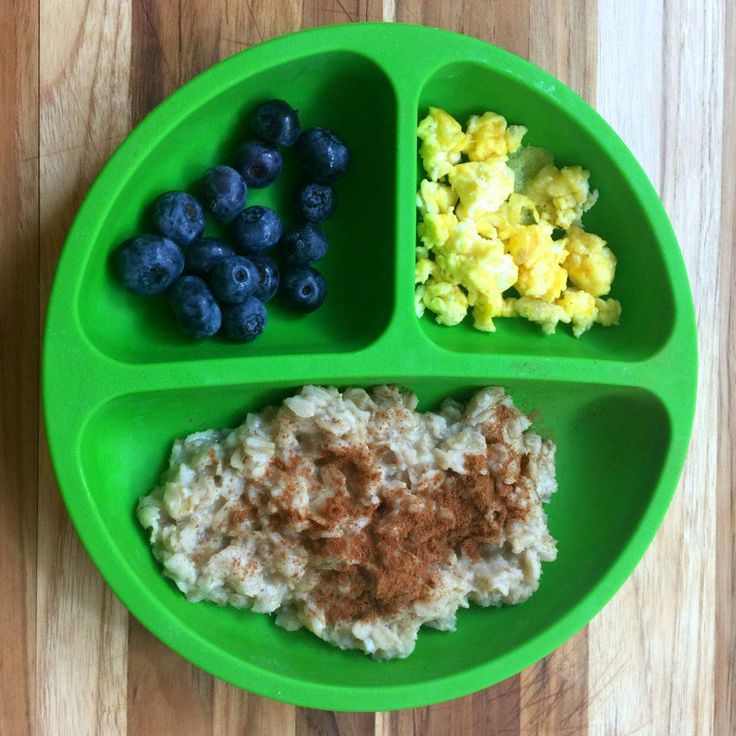 It is recommended to offer water from a cup so that the child learns to drink, and not from a drinking bowl, a bottle with a tube or a pacifier.
It is recommended to offer water from a cup so that the child learns to drink, and not from a drinking bowl, a bottle with a tube or a pacifier. Monitor the child's well-being, in case of any changes that worry you, consult a doctor.
Complementary foods with natural and artificial feeding
Mothers often wonder if there are any differences in the introduction of complementary foods with natural and artificial feeding. In both cases, the recommendations are the same: it is recommended to focus on food interest, signs of the child's readiness for the introduction of complementary foods. Usually, as we have already noted, the baby receives only breast milk or an adapted milk formula up to 6 months. With exclusive breastfeeding, it is not recommended to supplement the baby with water, especially in the first month when lactation is established. Bottle-fed babies can be offered water. nine0007
For both breastfeeding and artificial feeding, it is recommended to offer the baby a new food before feeding, and then supplement it with breast milk or formula.

— It is desirable to keep breast milk or formula in the diet of a child up to a year, — says Anna Levadnaya. - After a year, it is better to leave the bottle completely, gradually reducing the amount of the mixture. After a year, preferably closer to one and a half, cow's milk can be offered if the child is not allergic to its protein. Breastfeeding can be continued as long as it brings pleasure to mother and child. nine0007
How to prepare the first complementary foods
Give canned puree and baby porridge or cook it yourself? This question worries many mothers.
“In fact, there is no universal advice here,” says Anna Levadnaya. - Do what is comfortable and best for you. But when choosing food, remember that you must be confident in the products you buy. If you are not sure, buy canned purees, industrial baby cereals. The main advantage of any industrial baby food is that the products from which it is made are tested for the content of pesticides, heavy metals, nitrates and other harmful substances (labeled up to 3 years).
 If you're cooking yourself, cook with either seasonal fruits and vegetables or frozen ones. It is best to do it for a couple - this is how most vitamins and minerals are preserved. The advantage of homemade products is that we can provide the child with a different consistency, which is very important. But in any case, choose what is more convenient for you, more comfortable, including financially. The main principle is to provide the baby with a varied diet. Alternate between different foods. nine0007 Photo: pexels.com, Enrique Hoyos
If you're cooking yourself, cook with either seasonal fruits and vegetables or frozen ones. It is best to do it for a couple - this is how most vitamins and minerals are preserved. The advantage of homemade products is that we can provide the child with a different consistency, which is very important. But in any case, choose what is more convenient for you, more comfortable, including financially. The main principle is to provide the baby with a varied diet. Alternate between different foods. nine0007 Photo: pexels.com, Enrique Hoyos If you decide to cook yourself, use our tips on how to prepare puree and porridge for the first feeding.
Vegetable puree
Zucchini, broccoli, cauliflower, carrots, pumpkin are suitable for the first feeding. The vegetable should be fresh, without dark spots. We clean it from the peel, boil or steam it. Then we pass through a blender. The vegetable should be quite soft to get the most uniform consistency (if necessary, you can add a little boiled water).
 If it did not work out, then additionally the mass can be rubbed through a fine sieve. nine0007
If it did not work out, then additionally the mass can be rubbed through a fine sieve. nine0007 Fruit puree
To make fruit puree for your baby, such as apple or pear puree, fruit must first be baked in the oven, then peeled and passed through a blender or sieve to obtain the most homogeneous consistency. Choose fresh, ripe, seasonal fruits.
Porridges
Soak groats (for the first feeding, remember, this is rice, buckwheat, corn) for 4-5 hours in warm water. Then dry, for example, in a preheated oven. Next, grind the porridge in a coffee grinder into the consistency of flour and cook in water until cooked, this is about 5 minutes. For one tablespoon you need about 50-70 ml of water. nine0007
The main mistakes of parents
In fact, there is nothing complicated in the management of complementary foods. Use the guidelines, common sense, and have fun introducing your little one to new foods. With Anna Levadna, we have compiled a list of mistakes that parents often make when introducing complementary foods.
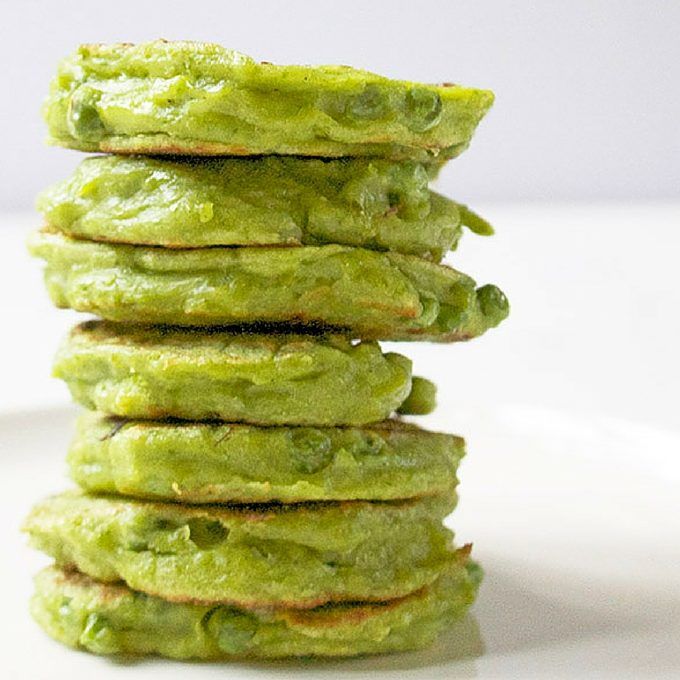 Try to avoid them.
Try to avoid them.
In a hurryIt often happens that a child refuses the first complementary foods. Most often, this suggests that the baby is simply not ready for it yet. And the parents, by hook or by crook, are trying to feed him mashed potatoes or porridge. Under no circumstances should you force-feed your baby. It is worth postponing the introduction of complementary foods for one to two weeks. nine0007
Give mashed food from a bottle
Do not do this, because the child must learn to eat liquid and solid food separately.
Salt or sugar is addedThese components are not recommended to be introduced into complementary foods for a child under one year old, sugar is better up to three years.
Only the bottle is used for too longFor example, in addition to formula, if the child is on IV, they give water, compote and other drinks from the bottle. The danger is that long-term use of the bottle can reduce the child's desire to eat complementary foods and malocclusion, as well as lead to speech delay and swallowing problems.
